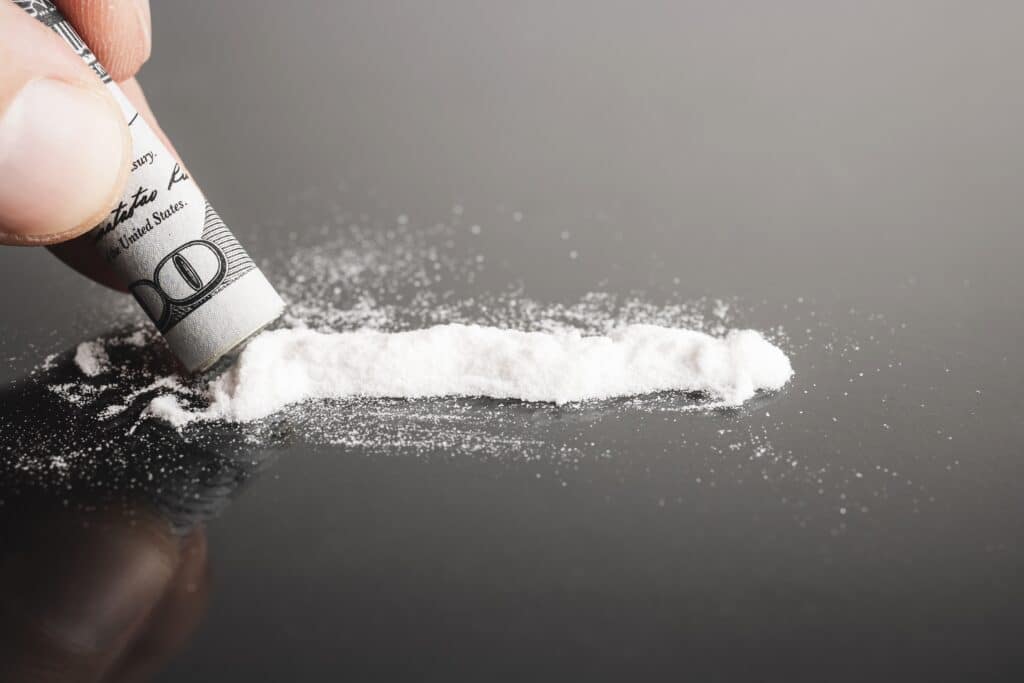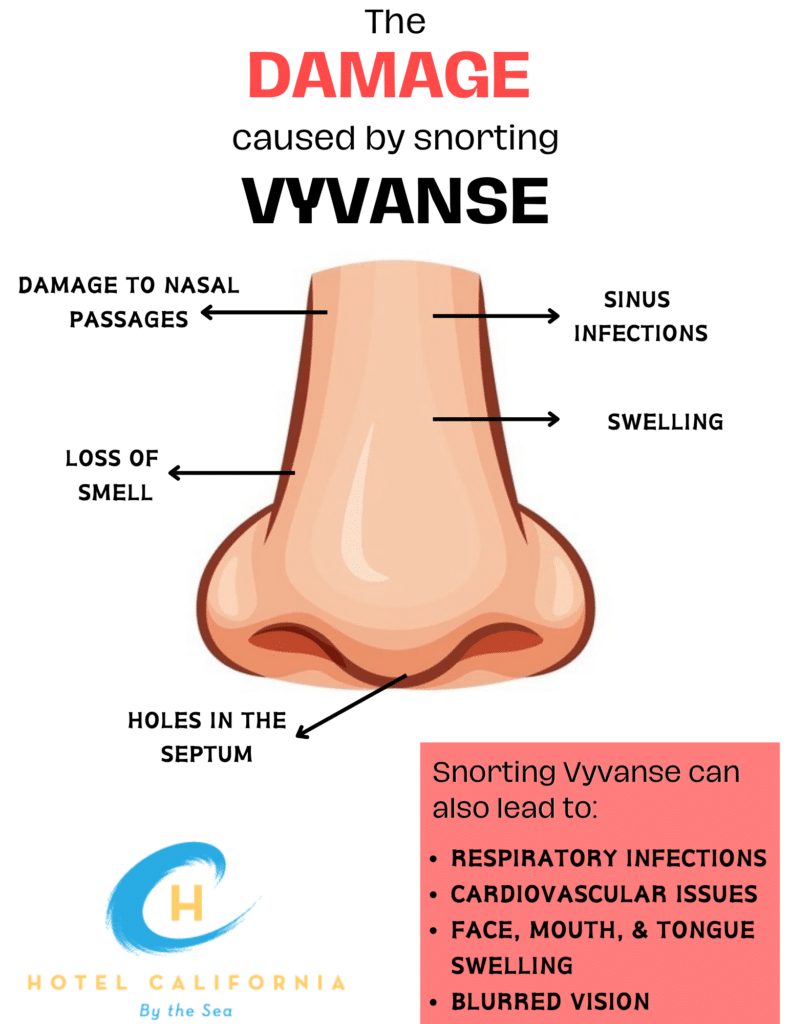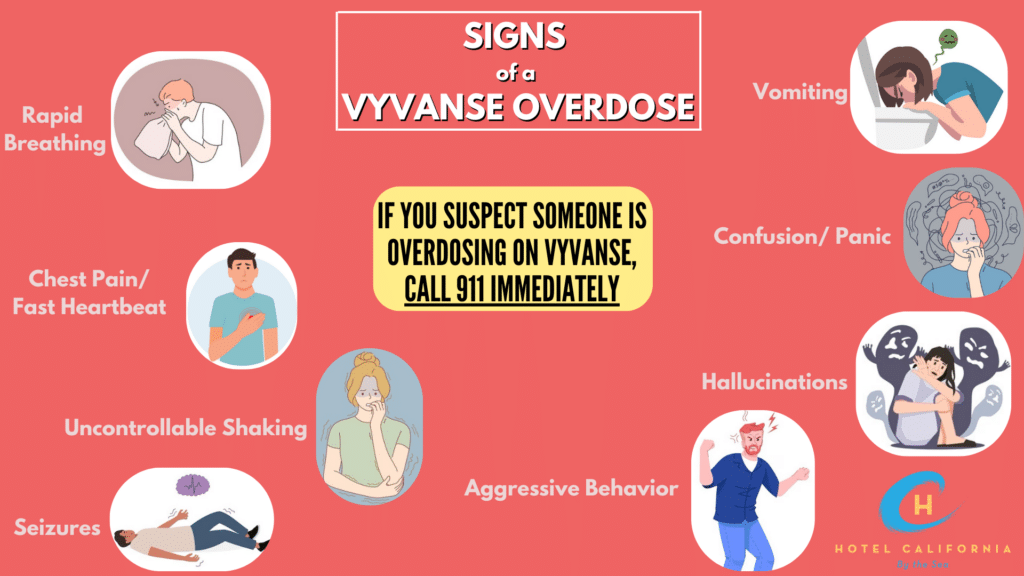Can you Snort Vyvnase?
Attention deficit hyperactivity disorder (ADHD) is a mental health condition that can affect both children and adults. ADHD is characterized by having difficulty paying attention, traits of hyperactivity and impulsivity. Treatment of this type of co-occurring mental health condition is often reliant upon stimulant prescription medications. Vyvanse is a prescription drug used to treat ADHD in adults and children as well as treating moderate binge eating disorder. In an effort to feel the intense pleasure effects of the stimulant, some users have resorted to snorting Vyvanse.
Stimulants have been part of evidence-based proven treatments used to treat ADHD symptoms for more than 50 years. ADHD is a common co-occurring mental health disorder found in patients who also suffer from a substance use disorder or alcohol use disorder. According to the World Federation of A.D.H.D., an estimated 5.9% of children and 2.5% of adults experience ADHD globally. In fact, about 65% of people who experience childhood ADHD, continue to have symptoms as an adult.

What is Vyvanse?
Vyvanse is also known by its active ingredient name lisdexamfetamine dimesylate. It is a central nervous system stimulant amphetamine prescription medication. It is a long-acting stimulant that works by changing the balance of brain chemicals in an effort to increase attention span and focus. It does this by increasing the presence of norepinephrine and dopamine in the brain.
Norepinephrine is a hormone chemical that helps regulate alertness, vigilance, memory and focus. Dopamine is a hormone chemical that affects a person’s motivation, movement, learning, desire, craving and reward system. Vyvanse works to improve focus and attention and decrease impulsive and hyperactivity behaviors in people with ADHD.
Vyvanse is known as a prodrug. This means the drug isn’t active in its ingested form. It must be metabolized by the body and converted into dextroamphetamine in order to become effective. Enzymes in the digestive tract chemically change the drug and it is converted into a potent stimulant that is then released into the bloodstream. This onset of side effects can take anywhere between one or two hours compared to another ADHD medication Adderall, which takes into effect after about 30 minutes. Because of its delayed onset of effects, the potential for abuse is generally low.
Vyvanse is a Schedule II controlled substance with a high potential for misuse and risk of dependence. The effects can last up to 14 hours. Vyvanse has a half-life of about 12 hours and it takes about five half-lives for the drug to completely leave your system. The medication is often used for long-term management of ADHD because it releases the same level of medication over a long period of time. This helps to avoid sudden dramatic increases of dopamine in the brain that are often associated with substance abuse and addiction.
Can you Snort Vyvanse?
Intranasal administration (snorting) of Vyvanse is becoming a more prevalent form of drug use among substance abusers. It is often associated with the desire to enhance desired effects of the drug and increase addiction potential. Those who snort Vyvanse are looking to achieve a sense of euphoria, an agent to help them focus when studying, or a method to help improve overall concentration and increased energy. These users also believe the effects of the drug will have a quicker onset and more intense effects similar to other mind-altering drugs. This is not true for Vyvanse.
Technically, you can snort Vynanse. However, it is most likely not going to deliver the desired effects. Snorting produces little to no side effects physiologically or psychologically. Lisdexamfetamine is encased in a layer of lysine that requires gastric enzymes from the stomach to activate it and turn it into the active drug dextroamphetamine. When snorting, the medication is sent directly into the bloodstream circulation of the body without producing any stimulant effects.
There is still a lack of statistical research and studies showing the prevalence and side effects of intranasal administration of Vyvanse. Snorting any type of drug can be dangerous and lead to serious side effects. Some include orofacial nasal pain, sinonasal congestion, sinus drainage, nasal septal perforation, asthma, eosinophilic lung disease and respiratory infections.

Side Effects of Snorting Vyvanse
- Sleepiness
- Dizziness
- Feeling anxious or jittery
- Headache
- Stomach pain
- Nausea and vomiting
- Chest pain, stroke or heart attack
- Uncontrollable shaking of the body
- Slow or difficulty of speech
- Mood swings
- Facial swelling
- Fever and chills
- Difficulty swallowing
Because Vyvanse is slow to break down and go into effect, unsuspecting users will continue to take more or a higher dose wondering why they have not felt any changes. This leads to an overload of drug buildup to the point of toxicity and often leads to addiction and overdose of Vyvanse.

Vyvanse Addiction and Overdose
People on Vyvanse are the least prone to developing an addiction due to its chemical delay in action allowing for a once-daily dose. Although addiction to Vyvanse is not common, the prescription stimulant amphetamine is still a powerfully potent drug. If misused, it can lead to dependence and addiction. It is often misused to achieve a send of “high” or euphoria.
Common Side Effects of Vyvanse Abuse
- Anxiety
- Dry mouth
- Insomnia
- Loss of appetite
- Diarrhea
- Dizziness and nausea
- Headache
- Vyvanse crash – medication withdrawal side effects of feeling irritable or tired as the drugs wear off causing weight loss and feelings of depression.
- Cardiovascular effects – chest pain, high blood pressure, increased heart rate, heart attack, stroke, sudden cardiac death, shortness of breath, slurred speech or trouble speaking.
- Mental health conditions – psychosis, mania, suicidal thoughts and aggressive behavior.
- Serotonin Syndrome – the build-up of serotonin in the body that leads to a faster heartbeat, flushing, tremors, stiff muscles, loss of coronation, agitation, hallucinations and seizures.
- Raynaud Syndrome – poor blood circulation to fingers and toes making them turn purple or blue, and unexplained wounds on fingers and toes.
Check Your Insurance Coverage for FREE
Find out if your insurance covers addiction treatment in minutes. We accept most insurance!
Vyvanse also poses a risk for overdose or intoxication. In a poison control study, there are about 17,000 cases of toxic levels of exposure to ADHD medications such as Vyvanse and Adderall, every year. An excess of extracellular dopamine, norepinephrine and serotonin characterizes Vyvanse overdose. This causes an overload of chemicals, which can become toxic.
This can often lead to neurological disorders such as tremors, agitation, hostility, hallucinations and paranoia. It can cause cardiovascular disorders such as hypertension and tachycardia. It can cause autonomic disorders such as hyperthermia. It can cause musculoskeletal and renal manifestations such as seizures and high body temperatures. It can also cause gastrointestinal issues such as nausea, vomiting and diarrhea.
Vyvanse vs Adderall
Both stimulant amphetamines are commonly prescribed medications used to treat symptoms of ADHD. The drugs have similarities and differences that make them unique and distinct in how they work and treat ADHD. Vyvanse is a medication that is inactive until it is chemically altered in the body. The side effects are not activated until it is chemically changed into dextroamphetamine. Adderall is comprised of a mixture of different amphetamines and dextroamphetamine.
Vyvanse is FDA-approved to treat ADHD as well as binge eating disorders in adults. Adderall is FDA-approved to treat ADHD as well as narcolepsy. Vyvanse is a long-acting stimulant drug that comes in a chewable tablet and capsule form. Adderall comes in both an immediate-release and extended-release capsule form.
Reach out to Hotel California by the Sea
We specialize in treating addiction and other co-occurring disorders, such as PTSD. Our Admissions specialists are available to walk you through the best options for treating your addiction.
Treatment for Amphetamine Addiction
An addiction to stimulant amphetamines such as Vyvanse can cause changes to personality including the ability to control emotions. This can often lead to the development or worsening of co-occurring mental health disorders that present alongside substance addiction. Despite being at a lower risk of abuse due to its breakdown in the body and less intense effects, Vyvanse can still lead to dependence and addiction. At Hotel California by the Sea, we provide a complete and curated treatment plan for clients experiencing stimulant amphetamine addiction.
Clients can choose from varying levels of care including detox, residential, PHP and IOP programs. Each level of care will focus on a different aspect of addiction treatment to help clients prepare for life outside of rehab and in long-term recovery. Intensive therapies such as CBT, group therapy and EMDR therapy are specialized treatments unique to our rehab program. Our evidence-proven methods have helped clients understand the root causes of their addiction and learn how to effectively manage cravings and triggers associated with drug use and addiction.
Hotel California by the Sea is dedicated to helping our clients achieve sobriety and live a healthy life in recovery.
References:
https://www.ncbi.nlm.nih.gov/pmc/articles/PMC2873712/
https://www.healthline.com/health/drugs/vyvanse#side-effects
https://www.forbes.com/health/body/what-is-vyvanse/
https://www.medicalnewstoday.com/articles/vyvanse#_noHeaderPrefixedContent
https://www.verywellmind.com/vyvanse-profile-pediatric-medications-2633130
https://addictionresource.com/drugs/vyvanse/overdose/
https://vertavahealth.com/blog/the-dangers-of-snorting-vyvanse/
